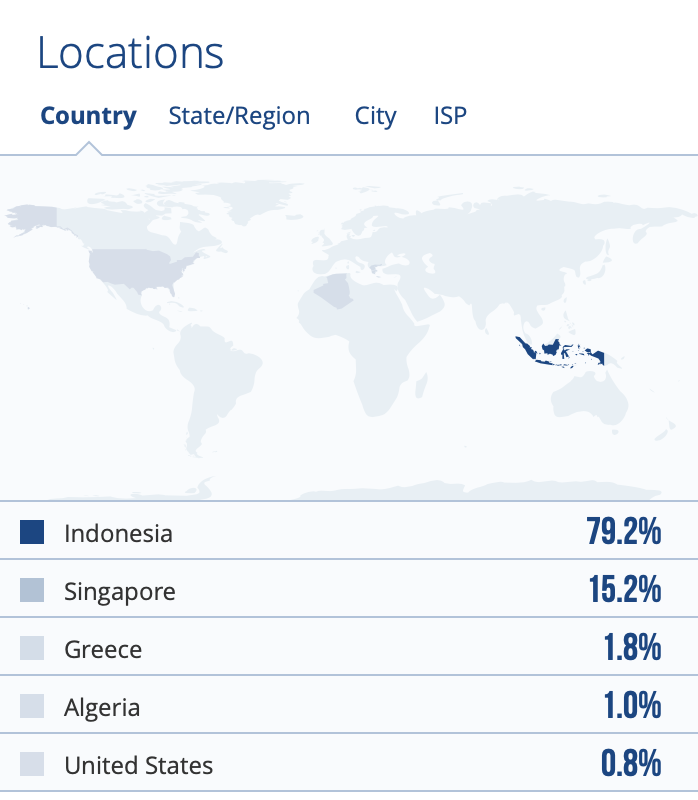THE STUDENTS’ PERCEPTIONS ON THE USE OF YOUTUBE IN LEARNING VOCABULARY
DOI:
https://doi.org/10.31980/eeal.v6i3.70Keywords:
Vocabulary, YouTube, EFLAbstract
This study aims to determine the students' perceptions of YouTube as a medium for learning English vocabulary. This research approach is qualitative research using a case study methodology. Semi- structured interviews and observation of non- participants were used as instruments for data collection. This research was conducted at a secondary school located in Garut, West Java. The participants in this study were ten eighth-grade students who were graded high, medium, and low in English. The results showed that most students felt comfortable using YouTube to learn vocabulary because it was easy to understand and had more exciting visualization. In addition, they feel motivated to learn vocabulary using YouTube because learning is more fun than other learning media. Furthermore, all participants experienced nasty things when using YouTube; internet access was unstable, and lots of advertisements while watching learning videos caused them to lose concentration. However, all participants positively perceived using YouTube as a medium for learning English vocabulary. That way, educators should be able to expand their skills in implementing YouTube as a medium for learning vocabulary with new strategies, and it is also hoped that educators can take a more proactive approach to help students learn English vocabulary.
References
Abbas, A., Gulzar, R., & Hussain, Z. (2019). The impact of social media (Facebook and YouTube) on vocabulary acquistion of ESL learners. Journal of Communication and Cultural Trends.
Abidin, M. J., Pour, M., Singh, I., Azman, R., & Souriyavongsa, T. (2011). The effectiveness of using songs in YouTube to improve vocabulary competence among apper secondary school studies. Theory and Practice in Language Studies, 1488-1496.
Albahlal, F. S. (2019). The impact of YouTube on improving secondary school students' speaking skills: English language teachers' perspectives. Journal of Applied Linguistics and Language Research, 1-17.
Alimemaj, Z. (2010). YouTube, language learning and teaching techniques. The Magazine of Global English Speaking Higher Education.
Atkinson, R. K., & Dunsworth, Q. (2007). Fostering multimedia learning of science: Exploring the role of an animated agent's image. Computers & Education.
Aziz, A. A., & Ngadiron, S. (2019). The effectiveness of YouTube english videos towards students vocabulary competency. International Journal of Recent Technology and Engineering, 259-263.
Balcikanli, C. (2011). Metagognitive Awareness Inventory for Teachers (MAIT).
Barry, B. (1998). Social Exclusion, Social Isolation, and the Distributin of Income.
Blake, R., & Sekuler, R. (2006). Perception. New York: McGraw-hill.
Brook, J. (2011). The Affordance of YouTube for Learning and Teaching. TESOK Working Paper Series.
Cahyana, A. A. (2020). THE USE YOUTUBE VIDEO IN TEACHING ENGLISH FOR FOREIGN LANGUAGE AT VOCATIONAL HIGH SCHOOL. JPBII.
Deng, L., & Yuen, A. H. (2012). understanding student perceptions and motivation towards academic blogs: An exploratory study. Australian Journal of Educational Technology, 28(1).
Fraenkel, J. R., & Wallen, N. E. (2012). How to design and evaluate research in education (Vol. 7). New York: McGraw-hill.
Gracella, J., & Nur, D. R. (2020). Students' Perception of English Learning through YouTube Application. Borneo Educational Journal.
Gushendra, R. (2017). an Experimental Study: Improving Students' Vocabulary Mastery by Using English Songs. Indonesian Journal of Intergrated English Language Teaching, 53-64.
Hakim, L. N. (2019). The implementation of YouTube in Teaching vocabulary for young learners. Advanced English Studies, 13-18.
Heriyanto, D. (2015). THe effectiveness of using YouTube for vocabulary mastery. ETERNAL (English Teaching Journal).
Hia, M. (2021). THE EFFECT OF USING YOUTUBE ON STUDENTS' MOTIVATION IN LEARNING ENGLISH VOCABULARY. Dialectical Literature and Education Journal (DLEJ).
Hornby, C. L. (1986). The development of a normative standard for a modified hearing aid evaluation procedure. Univesity of Wyoming.
Ilyosovna, N. A. (2020). the importance of english language. International Journal on Orange Technologies, 22-24.
Indriani, K. S. (2021). Teachers' confidence in teaching english using YouTube channel in early pandemic Covid 19. Jurnal Kependidikan.
Jalaluddin, M. (2016). Using YouTube to Enhance Speaking Skills in ESL Classroom. English for Specific Purposes World, 17(50).
Kabooba, R., & Elyas, T. (2018). The Effects of YouTube in Multimedia Instruction for Vocabulary Learning: Perceptions of EFL Students and Teachers. Canadian Center of Science and Education.
Kabouha, R. (2015). The impacts of using YouTube videos on learning vocabulary in saudi EFL classroom. ICERI2015 Proceedings, 3525-3531.
Khajloo, A. I. (2013). Problems in teaching and learning English for students. International Journal of Engineering Research and Development, 56-58.
Koentjaraningrat. (2010). Sejarah Teori Antropolgi II. Jakarta: UI-Press.
Marchionini, G., Samet, H., & Brandit, L. (2003). Digital Goverment. Communications of the ACM.
Miles, M. B., Huberman, M., & Saldana, J. (2014). Qualitative Data Analysis. Singapore: SAGE Publications.
Mokodompit, Nurjana, R., Samola, N. F., & Tuerah, J. C. (2021). STUDENTS' PERCEPTION OF USING YOUTUBE IN VOCABULARY MASTERY. Journal of English Language and Literature Teaching.
Nasution, A. K. (2019). YouTube as a media in english language teaching (ELT) context. UTAMAX.
Nofrika, I. (2019). EFL students' Voices: The Role of YouTube in Developing English Competences. Journal of Foreign Language Teaching and Learning.
Nurdyansyah, Rais, P., & Aini, Q. (2017). The role of education technology. Madrosatuna: Journal of Islamic Elementary School.
Qiong, O. U. (2017). A Brief Introduction to Perception. Studies in literature and language, 15(4).
Robbins, S. P. (1995). Organizational Behavior Management. Tehran: Commercial Researches and Studies Institute.
Robbins, S. P., & Judge, T. A. (2013). Organizational Behavior Edition 15. New Jersey: Pearson Education.
Saed, H. A., Haider, A. S., Hussein, R. F., & Salman, S. (2021). The use YouTube in developing the english skills of Jordanian EFL University Studies. Heliyon.
Sakkir, G., Dollah, S., & Ahmad, J. (2020). Students' perceptions toward using YouTube in EFL Classroom. Journal of applied science, engineering, technology, and education.
Scrivener, J. (2005). Learning Teaching. OxFord: Macmillan.
Ur, P. (1996). Teaching Vocabulary. A course in language teaching: Practice and Theory.
Walgito, B. (2010). Pengantar Psikologi Umum. Yogyakarta: C.V Andi.
Downloads
Published
How to Cite
Issue
Section
License
Copyright (c) 2024 English Education and Applied Linguistics Journal (EEAL Journal)

This work is licensed under a Creative Commons Attribution-NonCommercial-ShareAlike 4.0 International License.






